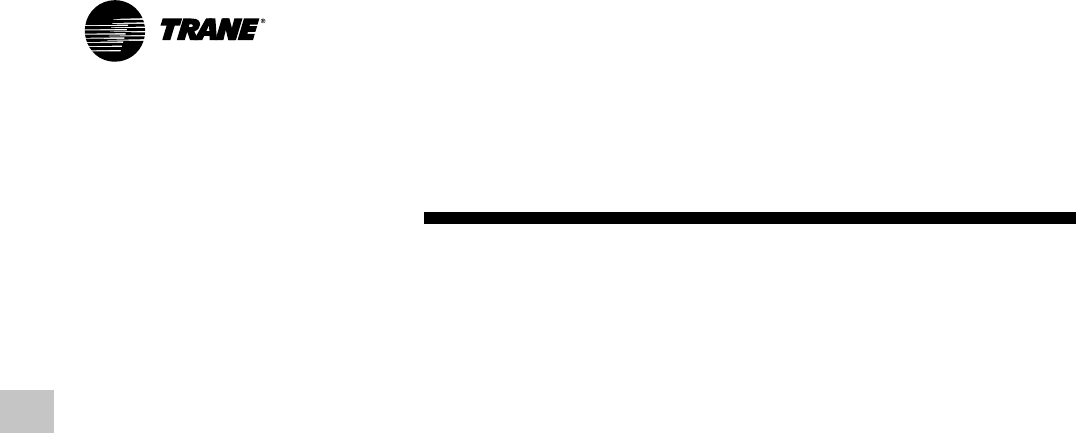
CTV-PRC001-GB
10
Condenser Water Limitations
Te mpe r at u re
Trane centrifugal chillers start and
operate over a range of load conditions
with controlled water temperatures.
Reducing the condenser water
temperature is an effective method of
lowering the chiller power input.
However, the effect of lowering the
condenser water temperature may
cause an increase in system power
consumption.
In many applications Trane centrifugal
chillers can start and operate without
control of the condenser water
temperature. However, for optimum
system power consumption, and for
any applications with multiple chillers,
control of the condenser water circuit is
recommended. Integrated control of
the chillers, pumps and towers is easily
accomplished with Trane’s CH530 and/
or Tracer system.
Chillers are designed to ARI conditions
of 29.4°C (85°F), but Trane centrifugal
chillers can operate to a five psig
pressure differential between the
condenser and evaporator at any
steady state load without oil loss, oil
return, motor cooling, refrigerant hang-
up problems. And this differential can
equate to safe minimum entering
condenser water temperatures at or
below 12.8°C (55°F), dependent on a
variety of factors such as load, leaving
evaporator temperature and
component combinations. Start-up
below this differential is possible as
well, especially with CH530 soft start
features
Water Pumps
Avoid specifying or using 3600 rpm
condenser and chilled water pumps.
Such pumps may operate with
objectionable noises and vibrations. In
addition, a low frequency beat may
occur due to the slight difference in
operating rpm between water pumps
and centrifugal motors. Where noise
and vibration-free operation are
important, The Trane Company
encourages the use of 1750 rpm
pumps.
Water Flow
Today’s technology challenges ARI’s
traditional design of three gpm per ton
through the condenser. Reduced
condenser flows are a simple and
effective way to reduce both first and
operating costs for the entire chiller
plant. This design strategy will require
more effort from the chiller. But pump
and tower savings will typically offset
any penalty. This is especially true
when the plant is partially loaded or
condenser relief is available.
In new systems, the benefits can
include
dramatic savings with:
• Size and cost for condenser lines and
valves
• Size and cost of the cooling tower.
• Size and cost of the water pumps.
• Pump energy (30 to 35% reduction).
• Tower fan energy(30 to 35%
reduction).
Replacement chiller plants can reap
even greater benefits from low flow
condensers. Because the water lines
and tower are already in place, reduced
flows would offer a tremendous energy
advantage. Theoretically, a 2 GPM/ton
design applied to a system that
originally used 3 GPM/ton would offer
a 70% reduction in pump energy. At the
same time, the original tower would
require a nozzle change but would then
be able to produce about two degrees
colder condenser water than before.
These two benefits would again
typically offset any extra effort required
by the chiller.
Contact your local Trane Sales Office
for information regarding optimum
condenser water temperatures and
flow rates for a specific application.
Water Treatment
The use of untreated or improperly
treated water in a chiller may result in
scaling, erosion, corrosion, algae or
slime. It is recommended that the
services of a qualified water treatment
specialist be used to determine what
treatment, if any, is advisable. The
Trane Company assumes no
responsibility for the results of
untreated, or improperly treated water.
Application
Considerations


















